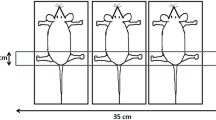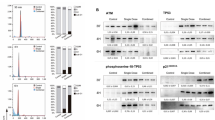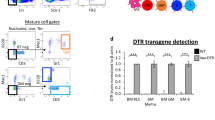Abstract
WE have previously shown that native homologous deoxyribonucleic acids (DNAs) can be used as therapeutic agents in irradiated animals. We showed that, for example, native homologous testes DNA significantly increases the percentage of survival of infantile rats and mice (8 and 17 days old), irradiated with a dose of 600 r.1. Furthermore, we obtained a positive therapeutic effect in infantile rats of the same age injected with liver DNA after irradiation with a dose of 600 r.2. Our results showed that other DNAs, such as those from thymus and spleen, can increase the survival from radiation disease3. We also showed that these homologous native DNAs from various organs not only increase the proportion surviving radiation disease, but also support the regeneration of function in the reproductive organs of irradiated immature male rats. The percentage of fertile rats is significantly higher (60–70 per cent) in animals treated with DNA (isolated from various organs) after irradiation, than in control animals (25–30 per cent)3,4.
This is a preview of subscription content, access via your institution
Access options
Subscribe to this journal
Receive 51 print issues and online access
$199.00 per year
only $3.90 per issue
Buy this article
- Purchase on Springer Link
- Instant access to full article PDF
Prices may be subject to local taxes which are calculated during checkout
Similar content being viewed by others
References
Savkovič, N., Nature, 200, 1073 (1963).
Savkovič, N., and Bečarevič, A., Strahlentherapie, 126, 465 (1965).
Savkovič, N., and Hajdnukovič, S., Intern. J. Radiat. Biol. (in the press).
Savkovič, N., Nature, 203, 1297 (1964).
Pantič, V., Stosšič, N., Kanazir, D., Béčarevič, A., and Jovicki, G., Nature, 194, 942 (1962).
Pantič, V., Stošić, N., Kanazir, D., Bečarevič, A., and Jovicki, G., Nature, 193, 993 (1962).
Lorenz, E., Uphoff, D., Reid, T. R., and Shelton, E., J. Nat. Cancer Inst., 12, 197 (1951).
Lorenz, E., Congdon, C. C., and Uphoff, D., Radiology, 58, 863 (1952).
Cole, J. L., and Ellis, M. E., Amer. J. Physiol., 173, 487 (1953).
Panjevac, B., Ristič, G., and Kanazir, D., Proc. Second Intern. Conf., Geneva, 23, 64 (1958).
Paoletti, C., Rebiere, J. P., Aubin, G., and Toubiana, M., Revue Française d'études cliniques et biologiques, 9, 950 (1964).
Zamenhoff, B., Griboff, G., and Marullo, N., Biochim. Biophys. Acta, 13, 459 (1954).
Author information
Authors and Affiliations
Rights and permissions
About this article
Cite this article
SAVKOVIČ, N., KAČAKI, J. & HAJDNUKOVIČ, S. Recovery Effect of Heterologous Deoxyribonucleic Acid from Various Organs on Irradiated Mice. Nature 211, 1179–1180 (1966). https://doi.org/10.1038/2111179b0
Issue Date:
DOI: https://doi.org/10.1038/2111179b0
This article is cited by
-
The influence of pretreatment with exogenous DNA on the frequencies of aberrations induced by X-Rays
Biologia Plantarum (1976)
-
Influence of exogenous DNA on Ypenyl-treated chromosomes ofVicia faba L.
Biologia Plantarum (1969)
-
Nuclear Uptake of Exogenous DNA by Mammalian Cells in Culture
Nature (1968)
Comments
By submitting a comment you agree to abide by our Terms and Community Guidelines. If you find something abusive or that does not comply with our terms or guidelines please flag it as inappropriate.



